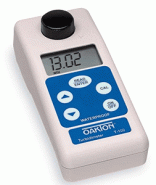What’s Most Important When Measuring Turbidity? (Part One)

This is part one of a two-part series on turbidity and tools to measure it, including turbidity meters.
A glass of drinking water is expected to be clear. That's because US government regulations determine the acceptable level of turbidity—or volume of particulates suspended—in the water. Untreated stream water that contains clay, plankton, or organic compounds may appear as a murky brown. Aside from appearing unappetizing, this high degree of turbidity may not be safe to drink.
Water clarity is expressed as level of turbidity (NTU or nephelometric turbidity units) and measured with a turbidity meter. Beyond drinking water and manufacturing water for other beverages, turbidity is helpful in determining water quality for fish and aquatic life. High turbidity can impact water treatment costs, which in turn affects production in industries such as food processing, pharmaceuticals, and many others.
Tools for Measurement
Turbidity meters, Secchi disks, and turbidity tubes all measure turbidity. While Secchi disks and turbidity tubes are lower cost options, users may sacrifice accuracy and face other limitations

Comentarios
Publicar un comentario